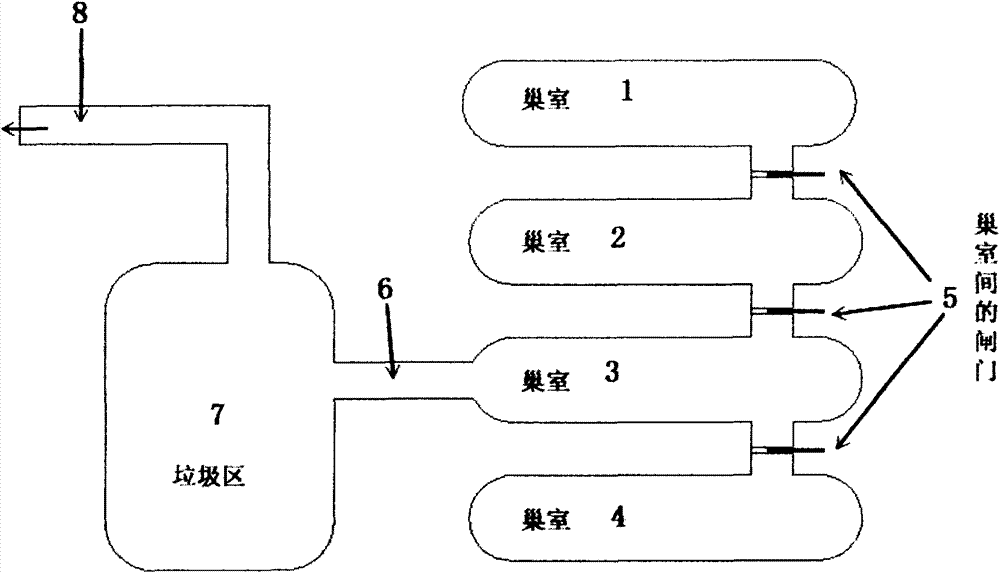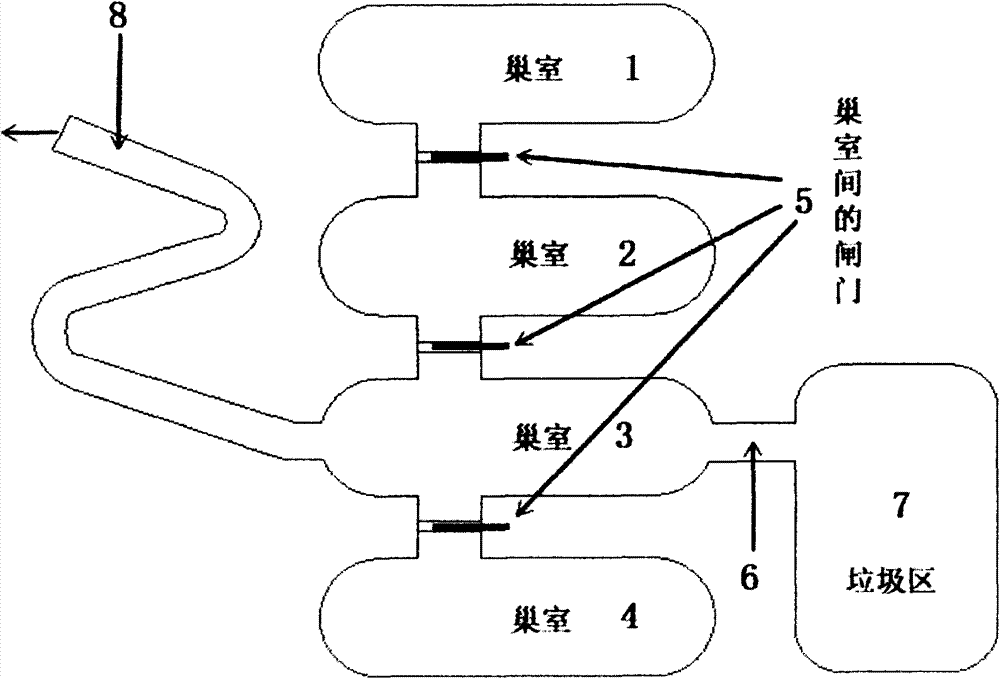Artificial ant nest
A technology of artificial ants and nest chambers, which is applied in animal husbandry and other fields, can solve the problems of littering, difficult cleaning, and inconvenient observation, and achieve the effect of easy cleaning and suitable for observation
- Summary
- Abstract
- Description
- Claims
- Application Information
AI Technical Summary
Problems solved by technology
Method used
Image
Examples
Embodiment Construction
[0014] The present invention will be further described in detail below in conjunction with the accompanying drawings and specific embodiments.
[0015] An artificial ant nest according to the present invention includes several independent nest chambers, garbage areas, and feeding areas, and a gate is used to control the opening or closing state between each nest chamber area, so as to control the size of the nest chamber space. Set up a larger, air-permeable area closer to the nest room as a litter area. The passage distance from the nest room to the garbage area is shorter than the passage distance from the nest room to the feeding activity area.
[0016] Such as figure 1 As shown, the ant nest room is divided into several areas 1, 2, 3, 4, and gate 5 is controlled between each area. The waste area 7 and the feeding area are arranged on the same side of the nest, ie the nest is connected to the waste area 7 by a passage 6 connected to the waste area 7, which is connected to...
PUM
 Login to View More
Login to View More Abstract
Description
Claims
Application Information
 Login to View More
Login to View More - R&D
- Intellectual Property
- Life Sciences
- Materials
- Tech Scout
- Unparalleled Data Quality
- Higher Quality Content
- 60% Fewer Hallucinations
Browse by: Latest US Patents, China's latest patents, Technical Efficacy Thesaurus, Application Domain, Technology Topic, Popular Technical Reports.
© 2025 PatSnap. All rights reserved.Legal|Privacy policy|Modern Slavery Act Transparency Statement|Sitemap|About US| Contact US: help@patsnap.com



